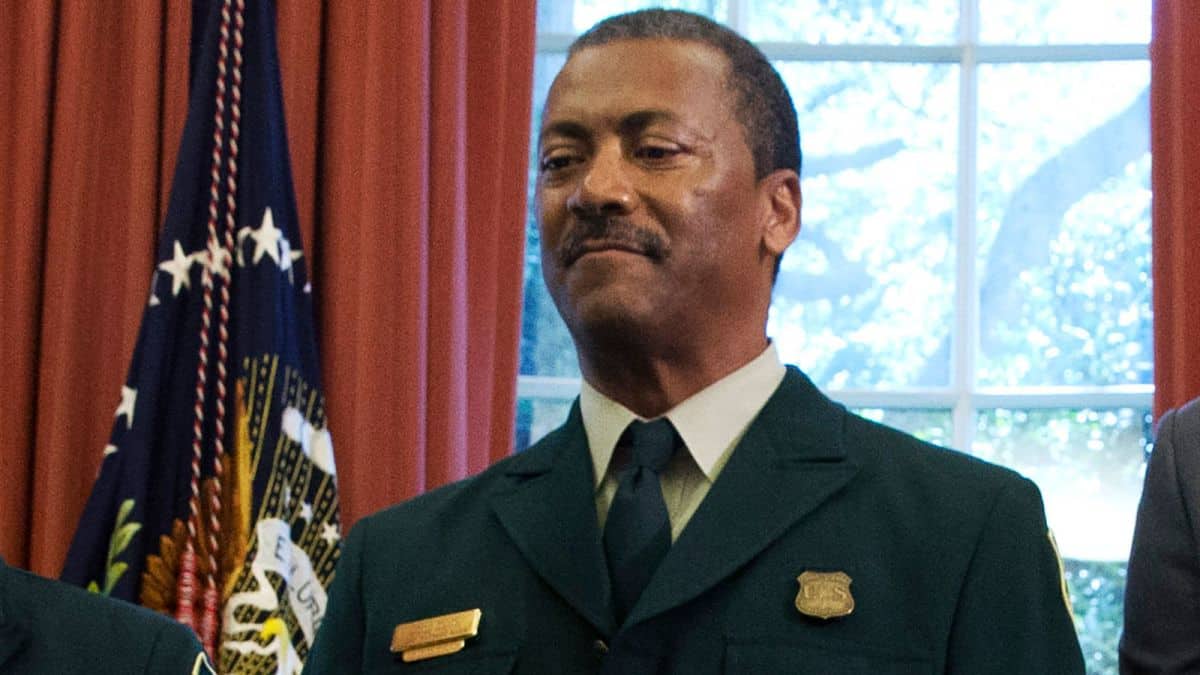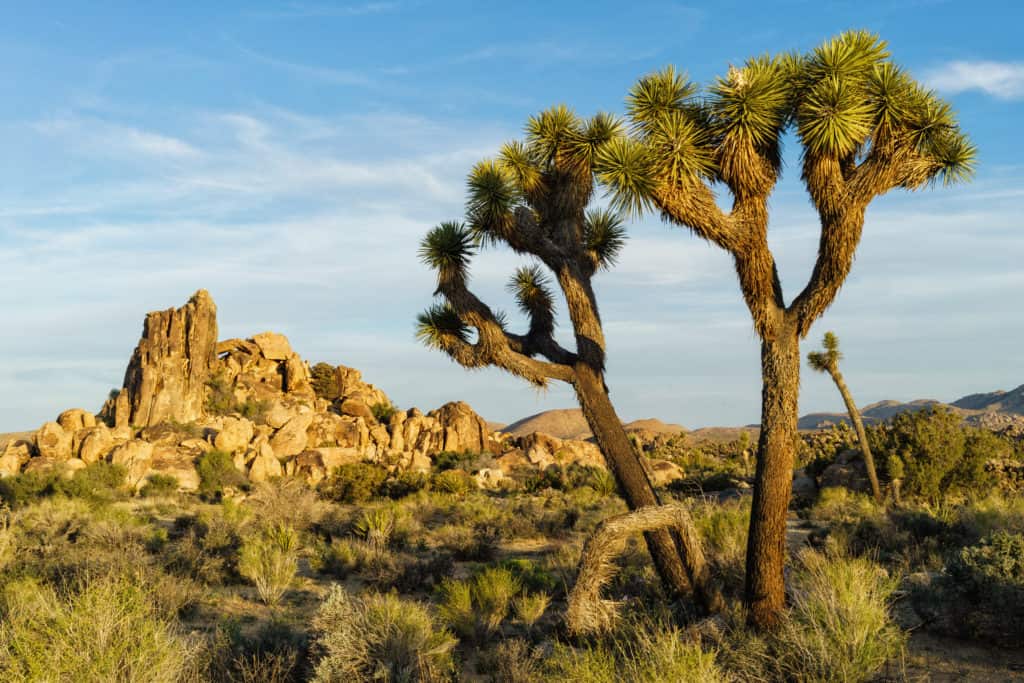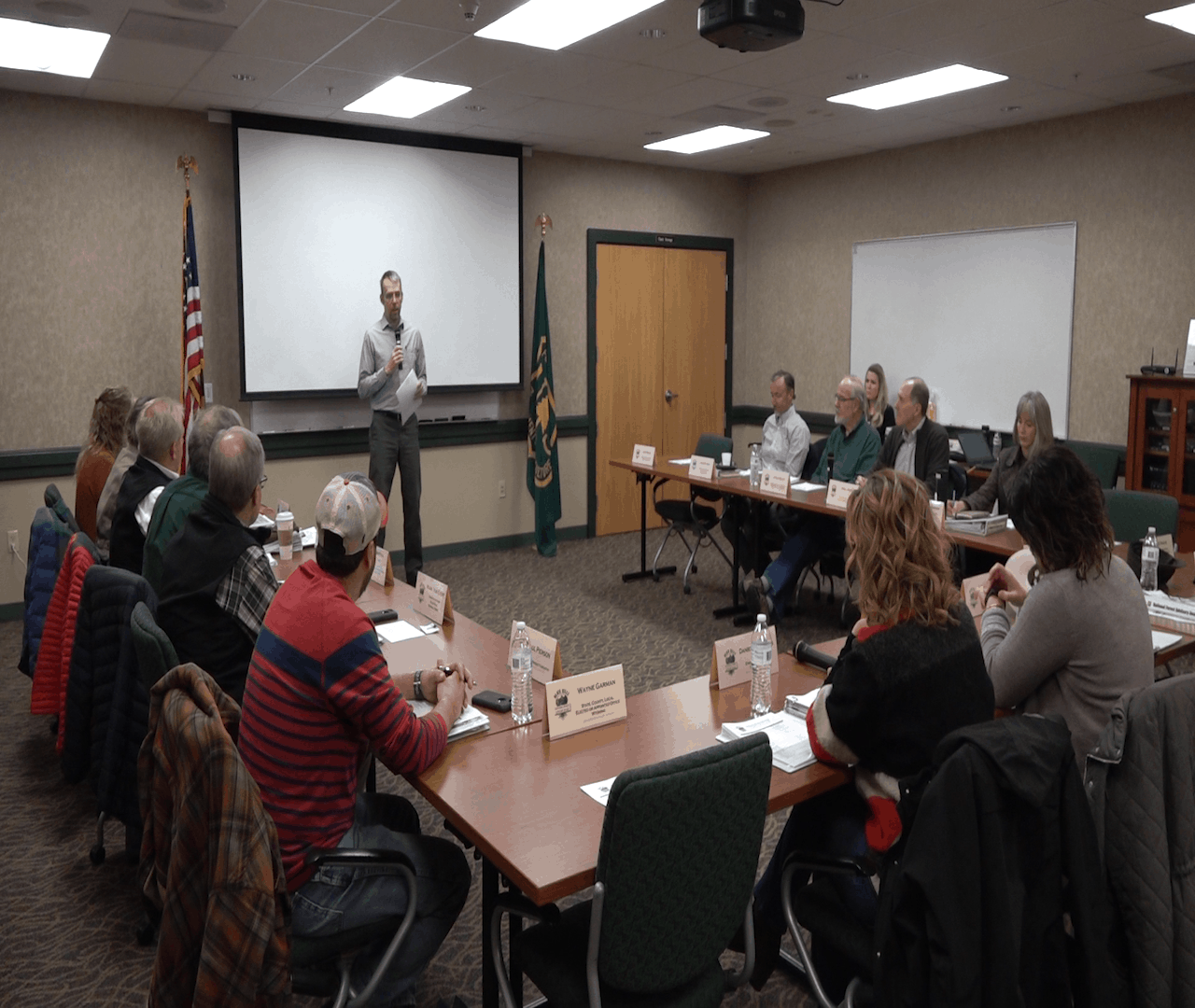You are the first Black person to lead the Forest Service. In your first address, you said it’s “not going to take another 116 years to have another person of color” serve as chief. What is the agency doing to ensure that happens?
I think this administration is off to a really good start on that with the focus on equity and inclusion. The steps are being put into place where people are in position to be considered for the chief job going forward. I think we have more options these days than what we’ve had in the past, simply because you have a lot of people at the upper end of the organization that are people of color. The opportunities are there, so now it’s a matter of selection.
California is experiencing unprecedented fire behavior. This summer, the Dixie and Caldor fires became the first ever to burn from one side of the Sierra to the other. Does the Forest Service need to change its approach to these fires?
We’ll never be able to hire enough firefighters to fight our way out of what’s going on on the landscape. We’re seeing conditions out there that I have not seen in my 40-plus years of working for this agency. Due to climate change, due to extreme drought that’s taken place, the fire intensity is just off the charts. We’ve always had pyrocumulus clouds at certain nasty fires, but I’ve seen more of them this year. In some cases, fire retardant hasn’t had much of an effect. It’s burning just that hot and moving quickly. I think you have to balance the conversation a bit by not only talking about the need to suppress these fires; we have to talk fuel treatments. We have to do a lot more forest treatment so we have healthy, resilient forests. That’s our biggest weapon against a lot of the fire activity that’s taken place here.
This was a close call for South Lake Tahoe. Did you get lucky with the changing weather? Are there strategic lessons you learned from that experience?
What I saw with my own eyes on the ground is that where we have had fuel treatments, those helped tremendously. If you look at the southern end of [the Caldor] fire and how it moved up toward Lake Tahoe, you can see a blank spot where [a previous fire] was. I’m told the head of that flame was about 150 feet approaching South Lake Tahoe, and when it hit those treated areas, it dropped down to about 20 feet. We have proof that these treated areas really helped slow the fire down. It doesn’t always stop the fire — it’s not intended to stop it — it is intended to slow it down so the firefighters can get out there on the ground and knock it down.
How do you square the need for more prescribed burning with the fact that the Forest Service doesn’t have enough money or trained employees?
The challenge for us has been: Do we have the capacity to burn during the window in which we have to burn? And the answer has been no. We’ve lost about 37% of our non-fire workforce over the last 15 years. The capacity has been lost for quite a while. If you go back far enough, you will see that fire used to be about 14%-17% of the workforce, and now it’s over 50%. It’s not that we need to reduce fire; that’s not it at all. We need to increase our resource-related work. There are some locations out there where we are borderline viable.
Last month, you announced a policy of suppressing all fires, even if they are burning far from populated areas and under close watch. This is increasingly a source of tension between politicians who think “managed fire” is an oxymoron and scientists who say it prevents more destructive fires. Why did you make this decision?
It wasn’t a different policy — it was a clarification of our existing policy. There’s a perception out there that we have a “let it burn” policy, and we do not. We’re placing critically needed resources on fires that present the greatest risk to population centers. The last two years, we’ve had such a historical level of fire activity on the ground, and we had every firefighter that we could muster, so it looks like we have a “let it burn” policy to some people. But the reality is we just had so few firefighters. The other thing is, I have called a temporary pause on prescribed burning, because we simply do not have firefighters to put fires out if they escape.
Has the severity of the fires cut through some of the politicized disagreements over how to prevent them?
Yeah, I think so. When you live away from fire, you tend to have a different perspective about what fire can do to a community. And when you live in these communities that are affected by fire — not only by fire itself but the smoke — you will see more of a willingness, in my opinion, to start addressing this issue. Because you have lost livelihoods, you have lost lives, you have lost whole communities. You have suffered from a health perspective. You have lost all of your mementos and the things you valued your entire life. There’s a lot of loss that’s currently going on in our country from these fires, and it’s in ways that we haven’t even quite measured. Look at the carbon that’s released. Look at the amount of trees we’ve lost in the landscape and the effect that it’s had on sensitive species. There’s a huge impact to our environment.
This was the hottest summer in California history. What’s the Forest Service doing to protect firefighters from heat illness?
That’s a real problem that we have had, and we’ve been trying to be very conscious of that. In fact, we’ve given our firefighters an extra day of rest in between shifts. In the past, they worked 14 days, and they’d be off two; now, they’re working 14 days, and they’re off three days. I think that’s really appreciated. We’ve added COVID coordinators on each of the teams now, not only for health reasons but also to see if we can’t do a better job of monitoring each other.
Is it true that COVID-19 has been a problem in fire camps this year?
Last year, this was new. More people seemed to have been serious about following the mitigation protocols. I don’t know about the attitudes and the perspectives around COVID now, but I will tell you we’ve had an increase in COVID infections this year over last year — matter of fact, quite a bit. We’ve done things like moving away from the large base camps to maybe smaller spike camps. We’re doing temperature checks. We also are offering COVID tests, and at some of our locations, we’ve started pilots where we’re working with the local health department to actually give vaccinations at some of our fire camps.
(A Forest Service spokeswoman said there were 1,373 positive coronavirus cases among employees in all of 2020. There have been 1,142 so far this year.)
Conversations about fire with Californians and other Westerners often tend toward despair. What, if anything, gives you hope?
I think this tragic situation we’ve been in lately with climate change and drought and just all of the fires and destruction and devastation, it’s also created an opportunity for addressing some of the problems we’re having. I’m seeing a willingness even in Congress to come together to look at some solutions to this. I’m hopeful because I know that while there’s a lot of attention on fire suppression, there seems to be gathering steam around forest treatment. There seems to be hope on the horizon in terms of having a budget that’s sufficient enough that we can go out and start doing the fuel treatments that need to take place.







